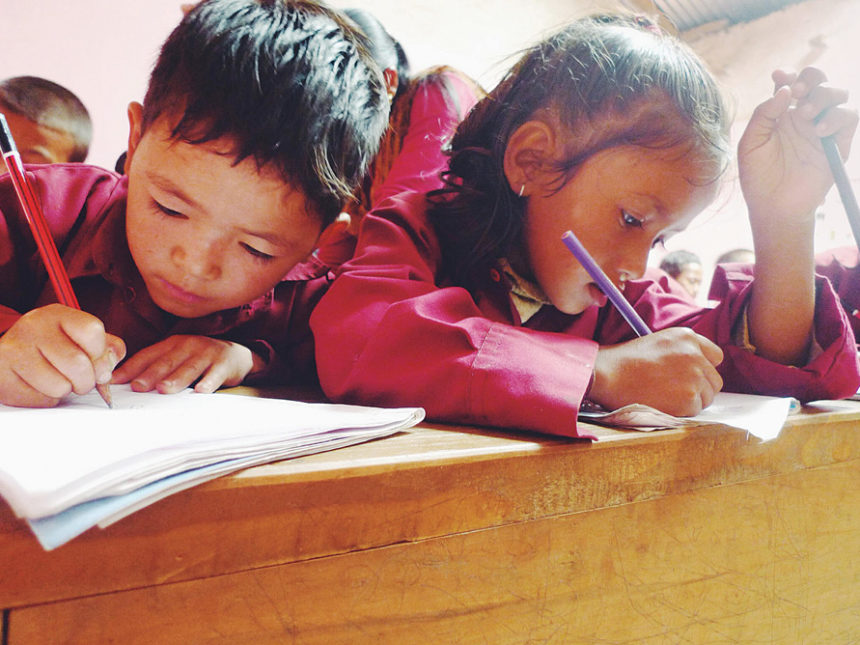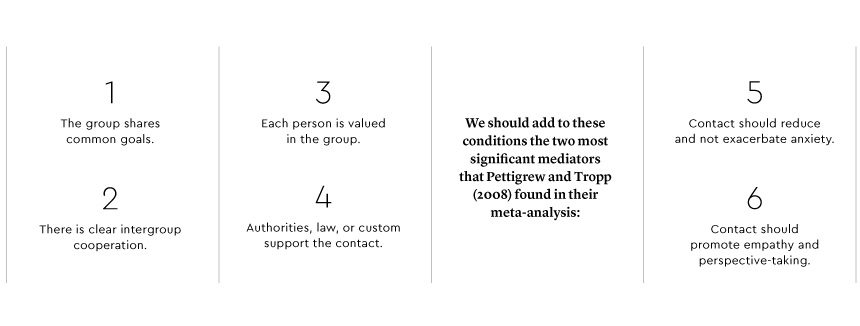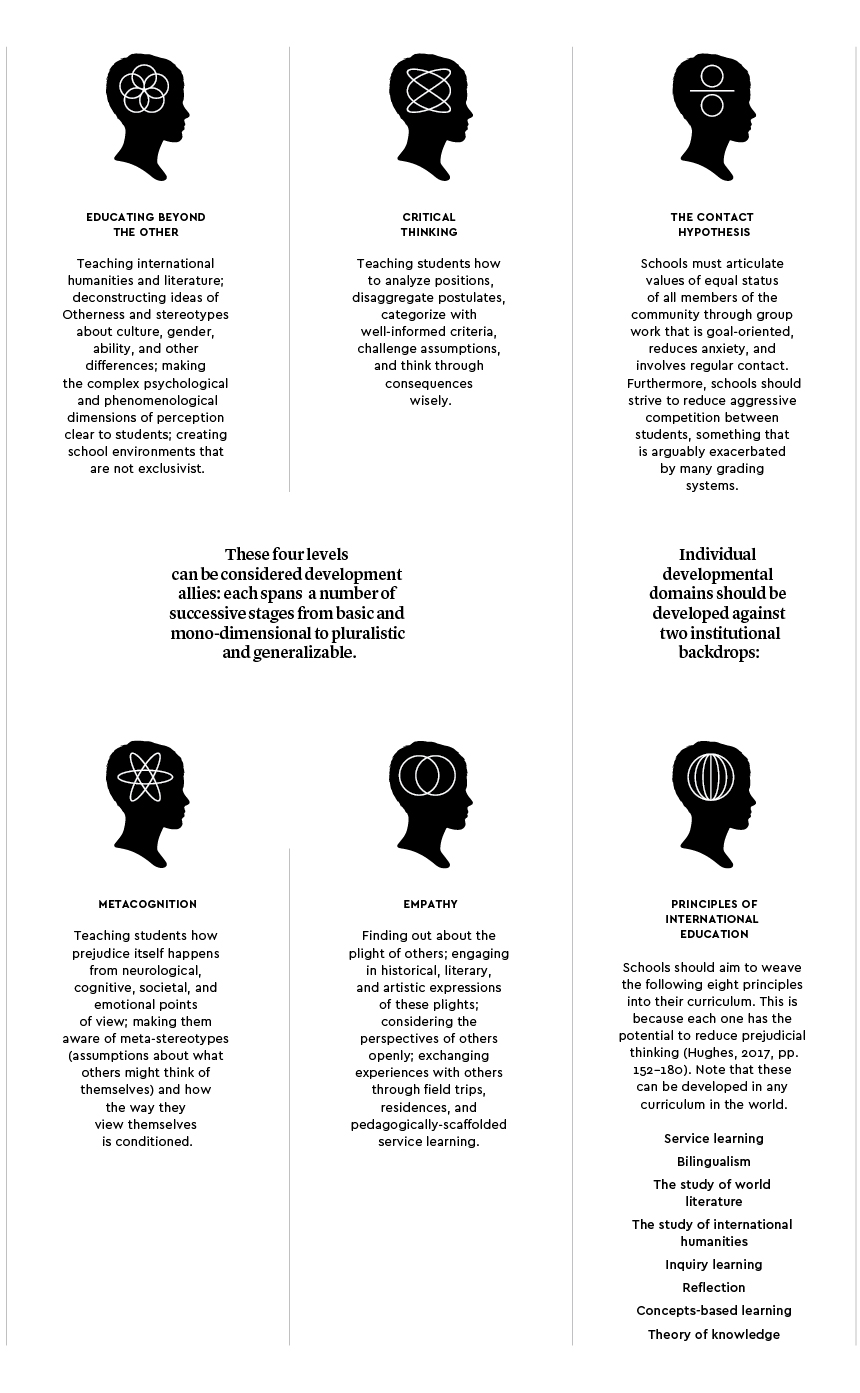
Learning
Prejudice and Education in the 21st Century
March 20, 2018
Conrad Hughes takes the conversation further into the what and how of prejudice, as well as how 21st-century education can combat prejudice.
illustration by Daniel Stolle
By Conrad Hughes
20/03/ 2018
·
- Share
Prejudice is a negative overgeneralization of another person or group. It comes from the Latin, meaning to pre-judge. Whereas a stereotype is a mere overgeneralization that one holds as an idea, prejudice takes the stereotype a step further by applying it negatively to real-life members of a social group in thoughts and language. When prejudice is translated into action, it can become discrimination or worse.
We are cognitively, socially, and culturally disposed to be prejudiced. Our brains work by classification and we tend to quickly reduce individuals to crude social categories in order to judge those individuals as friend or foe. This activity, in the early, reptilian part of our brain, happens more quickly than we are aware. Feelings of insecurity, threat, and fear often well up inside us and express themselves in the form of an instinct toward self-preservation which always prioritizes and favors the in-group at the expense of the out-group.
Even at the level of the cortex, where information is processed and we are capable of abstract thinking, deliberate evaluation, and weighted reflection, our working memory capacity is fairly weak, meaning that we struggle to hold onto pluralistic representations or multiple identities without forgetting some of them and reducing the thing perceived into a single entity. This is what happens when we reduce someone to one element of his/her being, for example, profession, gender, ethnic group, ideological preferences, beliefs, or nationality. Furthermore, we are perceptually predisposed to exaggerate differences between groups and minimize differences within groups, always imagining that we are like those in our group and different from those who are not in our group when in reality, differences and similarities might be the same within and across group members.
Therefore, like all sophisticated and powerful educational efforts, reducing prejudice requires a conscious effort to go beyond intuitive, lazy thinking and primal instincts; it is an act of the will involving critical thinking, self-analysis, metacognition, and deliberate selflessness—things that might not come naturally to us and have to be worked on.

School children writing in classroom. Photograph: Alamy
Prejudice on the rise
The second decade of the 21st century is full of paradox. On the one hand, one might argue that globalization and social media have brought people closer together than ever. Travel is far more accessible than it has ever been and material comfort is attainable for an increasing number of people. This would suggest that relationships across frontiers are easier to form than ever before. On the other hand, few could disagree that we have witnessed a surge of extremist thinking in right-wing demagogy, xenophobic rhetoric, and fundamentalism across the planet. As the planet’s biocapacity wanes, wealth and income inequality rise, and human resources become increasingly scarce, the idea of living together peacefully seems fragile.
Examples of prejudice and discrimination are so rife that one struggles to know where to begin. The US Department of Justice (2014) recorded over 220,000 cases of hate crimes every year from 2004 to 2012; the UK Home Office (Creese and Lader, 2014) reported that “in 2013/14, there were 44,480 hate crimes recorded by the police, an increase of five per cent compared with 2012/13, of which 37,484 (84%) were race hate crimes”. Before Adolph Hitler’s Mein Kampf was republished in Germany in 2016, over 15,000 people had placed orders (Addady, 2016). The Black Lives Matter movement in the United States points to a sorry state of affairs while anti-Islamic rhetoric is at a height in Europe and the United States. Albinos, Aborigines, Roma, Jews, and homosexuals still suffer from severe prejudice across the globe, while women throughout the world are the victims of lower salaries and conjugal violence. We are also deep in the throes of an uninhibited, post-politically–correct type of prejudice where racist, xenophobic, misogynistic, and bigoted statements are made in the public forum in the name of a sort of aggressive, liberated freedom of speech.
The phenomenon of the Internet has allowed anonymized, disinhibited discourse to proliferate on postings and messages. Anyone knows by trawling through the comments posted at the end of an article or YouTube video that discussions quickly veer into extremist language and propositions, as if to suggest that there is a deep-seated need to engage in profanity and verbal violence as a type of expiation or catharsis. Furthermore, confirmation bias is easy: a determined user can find some form of reported evidence proving one theory or another on the Internet, making it an easy repository of justification that the prejudiced person can cherry-pick at will. For example, statistics on crime are often used by right-wing politicians to slander ethnic minorities but are rarely put in their proper context of socioeconomic and demographic pressure.
The contact hypothesis
In 1954, Gordon Allport articulated his contact hypothesis in The Nature of Prejudice, his detailed study of prejudice from the perspective of social psychology. The theory remains a reference because it has been tested extensively with significant results over more than 50 years. Allport’s hypothesis states that we can lessen prejudice if people of different backgrounds come together and make contact, provided that four conditions are present:
Social psychology tells us that if environments are created where people can work together as a team on a collective goal under clearly articulated values that celebrate the equal value of each person, prejudice will be reduced. However, if people of different backgrounds are thrown together without any mediating strategies, there is a high likelihood that they will resort to stereotypes, then to prejudice, then to antilocution, and finally to violence, especially if the environment is highly competitive (as it often is in schools). Indeed, the intuitive idea that pluralistic or multicultural environments will lead to peaceful self-regulated appreciation of difference is wrong; ground rules are needed alongside a strong institutional message against prejudicial thinking and discriminatory practice.
An education for less prejudice
The Delors Report (UNESCO, 1996) describes four pillars of education: learning to learn, learning to do, learning to be, and learning to live together. If these are the basis of meaningful education, then learning how to reduce prejudice is surely a fundamental, ongoing goal. Reducing prejudice means reducing barriers that stand in the way of self-awareness, social cohesion, open-mindedness, and the growth mindset needed to open new opportunities to work with different people.
In my recently published book, Understanding Prejudice and Education: The Challenge for Future Generations (Routledge, 2017), I synthesized research in social psychology, cognitive psychology, critical thinking, and international education to present a model that can be adapted and adopted according to context. Each area should be self-assessed using criterion-referenced descriptors. Four areas need to be emphasized at an individual level:
We will never eradicate prejudice (it’s in our DNA), but we can reduce it if schools, instructors, and learners can openly discuss what prejudice means to them and learn about other people and the world in a reflective, open-minded, pluralistic manner. If we wish to make the world a better place, then a sure place to start is with the way that human beings see and treat each other, something that can be made more humane, nuanced, and restorative if it is taken seriously in the educational agenda.
References
Addady, M. (2016, Jan. 11). Mein Kampf is the hottest book in Germany. Fortune.
Allport, G. (1954). The nature of prejudice. Cambridge, MA: Addison-Wesley.
Creese, B., & Lader, D. (2014). Hate crimes, England and Wales, 2013/14. Home Office Statistical Bulletin. London: Home Office.
Hughes, C. (2016). Understanding prejudice and education: The challenge for future generations. Oxford: Routledge.
Pettigrew, T. F., & Tropp, L. R. (2008). How does intergroup contact reduce prejudice? Meta-analytic tests of three mediators. European Journal of Social Psychology, 38, 922-934.
UNESCO (1996). Learning: The treasure within. Paris: UNESCO.
US Department of Justice, Office of Justice (2014). Hate crime victimization, 2004–2012: Statistical tables. Washington, DC: US Department of Justice.


